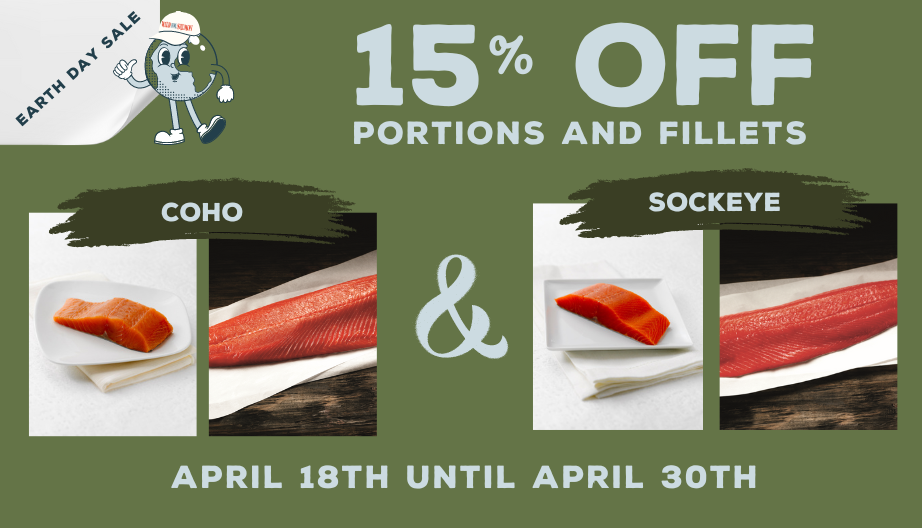In bush Alaska, the tradition of “putting up” fish is a rewarding and time-consuming part of everyone’s summer. As is the tradition of most Alaska native cultures, the summer task was, and still is for many, to catch and preserve fish to eat throughout the winter. Along the Kenai River every summer, thousands of Alaskans dip-net in order to fill their freezers. Commercial fishermen make sure to stick around for an extra tide to catch their fill of “home-pack” that they’ll ship directly to their winter home. Alaska’s awesome resource of wild salmon is bountiful, but it passes by quickly each season.
In constant movement, the schools of salmon run up the rivers in just a few short months. In Bristol Bay, this path is even shorter, with millions of fish streaming upriver in just six or so weeks. Thus, how do folks keep eating salmon all year long?

Luckily for most of us here in 2017, Wild for Salmon ships all across the eastern seaboard (...and, not to mention has recently lowered some prices on fillets)! We have freezers! And can order in bulk! And save on shipping!
So as to always have salmon on hand, us seafood lovers fill our freezers with the fresh flash-frozen catch and build the thawing and recipe trials into our weekly routine. Remember that ordering one big box means a lower price for you and more sustainable shipping practices for us--just the way we like them.
Traditionally, those who needed salmon to survive the winter spent the summer smoking, salting, drying, and canning the wild salmon. This subsistence practice of preserving is known as “putting up” fish. Many still spend portions of their summer doing this today, and it is partially why the Alaska Department of Fish & Game is so concerned with the King salmon run, which is a large portion of subsistence fishers nourishment.
Although modernity presents unique challenges and growing pains, many of us are grateful that putting up fish is a little less work these days. Freezers and vac-pack sealers have made this process much easier and extended salmon season long into the winter. It has also allowed those of us who have made a home in Bristol Bay to share it with you, which, in turn, has allowed us to continue to return and sustainably harvest the returning salmon. You’ll have to visit Bristol Bay to eat fish fresh from the river; until then, though, we invite you to fill your freezer, and to batten down the hatches feeling prepared by ordering in bulk this late fall.
Is your freezer space limited? We understand. Try a more traditional way! For the Kurians, this means firing up the smoker and smoking some portions in their own backyard. For Elma, this means canning mason jars of raw, portioned salmon with just a pinch of salt and maybe a jalepeño or garlic clove for beautiful and delicious holiday gifts. If this sounds like a bit more of an undertaking than your busy lifestyle awards, the health and taste of canned salmon is still available in our ready-to-ship cans!

Ava helping prep the salmon for smoke & her parents with their smoked fish during their first season in the bay!

To smoke fish:
- Thaw and portion two salmon fillets into about 2” slices. Leave the skin on.
- Create a brine with 3 cups water, 1 cup soy sauce (or 1 cup salt or smaller portions of both!), 1/2 cup brown sugar. You can be creative with these portions and play around with it to your liking; they key is sugar and salt. You may also want to add: minced garlic, onion powder, or ginger.
- Soak the salmon in the brine in the refrigerator for 6+ hours or overnight.
- Folks do this next step differently, but we recommend letting the portions air dry so the brine gets tacky on the meat before really firing up your smoker. You can do this on a windy day with your smoker door open or on cooking racks with a fan on directed at the meat.
- Follow your smoker directions and smoke! If you have a backyard smoker, aim for it to feel like a hot summer’s day in there and be ready to continuously stoke your small fire! Too hot a fire will cook the portions too fast and release the fatty goodness (the white pearls that show up in the crease of the fillet) that makes smoked salmon so delicious.
To can fish:
You must use a pressure cooker. These directions are good ones provided by the University of Alaska, Fairbanks and describe all the necessary safety measures. Elma packs her jars with ½ teaspoon salt and a jalapeno, which adds a slight flavor but mostly a nice, aesthetic look upon opening the jar.


Elma with prepped salmon strips & packed jars ready for the canner. Second photo by Randy Billmeier.
What will you try out this winter? Let us know in the comments! Bon appétit!

 Wild Alaska Salmon
Wild Alaska Salmon Alaska Salmon Burgers
Alaska Salmon Burgers Smoked Salmon & Seafood
Smoked Salmon & Seafood Wild Alaska Whitefish
Wild Alaska Whitefish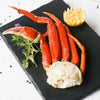 Wild Shellfish & Shrimp
Wild Shellfish & Shrimp Wild Albacore Tuna
Wild Albacore Tuna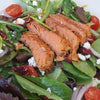 Canned Seafood
Canned Seafood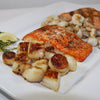 Meal Box & Samplers
Meal Box & Samplers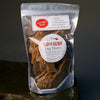 Pet Products
Pet Products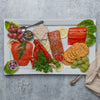 Gifts
Gifts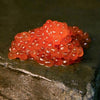 Specialty
Specialty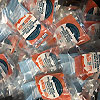 Wholesale Ordering
Wholesale Ordering